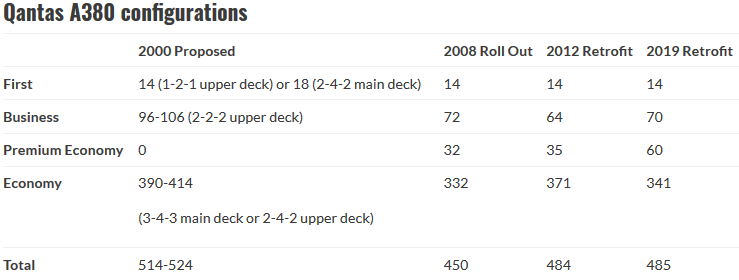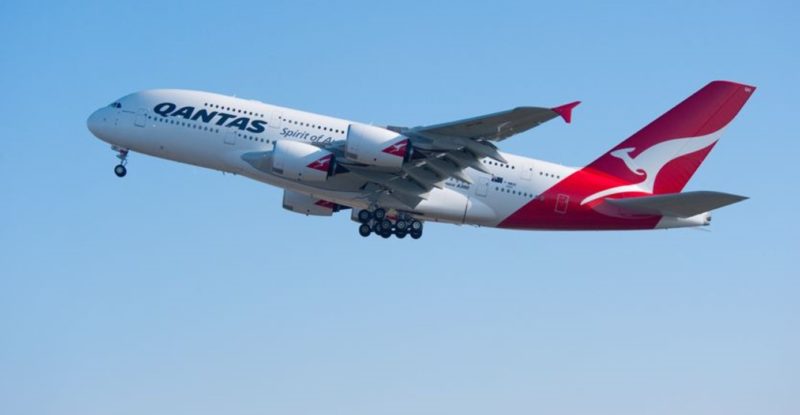When the Qantas board convened at 7am on the Friday before summer 2000, it had to assess acquiring a dozen frames of an aircraft that did not exist, of a scale never built before, from an airframer that offered nothing of the size prior, and for an airline that had previously only bought long-haul aircraft from the competition.
It was the A380, then known only as the A3XX-100. Qantas was weighing the A380 with the 747X, finding balance in the characteristics that would define not only the A380 but future aircraft programmes and airline management styles in the 21st century: the trade-off between innovation and risk.
The board agreed with management’s assessment that the A380 was the future for business – and the passenger experience.
‘A3XX is more likely to have a positive impact’
This unusual inside look is based on board papers that Qantas publicly filed in support of its 2010 lawsuit against Rolls-Royce concerning flight QF32.
Qantas’ assessment noted the 747X would offer newer 777-style interiors, but major passenger experience innovation would come only from the A380.
“The A3XX due to its larger size and full length upper deck is likely to appear as a more innovative new aircraft compared to the B747X,” management wrote, proclaiming it the future flagship. “The A3XX is more likely to have a positive impact on the Qantas brand in terms of a premium position and technical innovation than the B747X.”
The proposal noted the new cabin “is believed to have been a significant element in the decision by Singapore Airlines to acquire the A3XX.”
The A380 was a new platform for interiors. “The larger size of the A3XX lends itself to even greater flexibility and creativity in seating configurations and cabin space utilisation,” management wrote. In comparison, “The B747X is based on the B747 and represents the limit of improvements for that design.”
The main differences between the proposed spec in 2000 and the rolled-out product in 2008 are the introduction of premium economy and decrease in economy and business seats. Retrofits over the years would increase premium economy, including a substantial addition (35 to 60 seats) in the current retrofit.
There was a curious option to have first on the main deck in a very non-premium 2-4-2 configuration or 1-2-1 upper deck. Qantas would place first on the main deck, in a 1-1-1 configuration.
 Management assessed development potential over the years, including “weight increases associated with interior product changes”. No aircraft was explicitly favoured, but the paper noted that the A380 could see payload and range improvements.
Management assessed development potential over the years, including “weight increases associated with interior product changes”. No aircraft was explicitly favoured, but the paper noted that the A380 could see payload and range improvements.
Over the years Qantas has increased density and improved the business product, but removed galley and self-service units – the type of passenger experience innovation promised by the A380.
 Routes
Routes
Two projected A380 routes were never realised: Sydney-Bangkok-London and Sydney-Tokyo. Sydney was to see double daily A380 flights to Los Angeles (it would have daily) while Melbourne would see three weekly to Los Angeles (it too would typically have daily). Melbourne-Singapore-London would see nine weekly London flights, giving London three daily A380 flights twice a week.
Qantas would never have more than two daily A380 services to London, and today it has one A380 and one Boeing 787-9. Sydney-Hong Kong was not included in initial projections but today sees seasonal service.
How Qantas made the business case
Passenger and brand impact on the A380 was important but not numerically calculated. The business case weighed heavily on CASK.
Qantas projected the 747X to have a lower CASK than the A380, but the A380’s greater passenger payload would offset higher unit costs. This would prove to be the crux for many A380 operators: to realise the A380’s superior economics, the additional seats had to be occupied – yet filling them meant reduced yield.
Airbus sought to revitalise A380 sales by increasing seat count, but this exacerbated the challenge of filling seats. It has proved useful for Qantas by de-activating upper deck doors 3 to accommodate new premium seats with a larger footprint. Qantas is the launch customer for this Cabin-Flex option.
Legacy: cabin innovation but derivative aircraft
Qantas signed off on an A380 fleet plan that would carry it for a third of a century. Or perhaps even longer had there been variants with the capabilities Qantas noted: over-built wing to accommodate a stretch, as well potential for landing gear growth and engine thrust development. Qatar Airways CEO Akbar Al Baker recently opined that the A380 should have been built with a right-sized wing, not over-sized for a stretch variant.
Some of the largest changes could not be predicted. Qantas in 2000 projected fuel during the A380’s life to be US$29/barrel. Singapore Airlines was the competitive target but Emirates, which did not yet serve Australia, would end up flying more A380s to Australia than Singapore Airlines. Qantas did not consider the Boeing 777-300ER, which was in its infancy – as was Virgin Blue, then only three months old and flying domestically. Virgin would later use 777s to challenge Qantas on the North American market. Traffic rights globally would be expanded or even liberalised.
Emirates President Tim Clark, who oversees the largest A380 fleet, bemoaned airline management being too risk-averse, to the A380’s detriment. Airbus and Boeing have become risk-averse too, shunning all-new jets for derivatives. Boeing’s NMA becomes especially watched while the A220’s debut has received favourable attention.
Not all of the A380’s cabin features will survive, but the underlying innovation has grown across aircraft programmes even if the aircraft is a de-risked derivative.
Qantas is now assessing one derivative, the 777X, as well as the A350, which is now being mooted for an engine upgrade and other changes to make it an “A350neo”.
In 2000, Qantas assessed VLAs, the A3XX and 747X. The chairman of the board requested the minutes note that one board member “expressed reservations on whether acquiring a very large aircraft is the correct long-term decision for Qantas”. No explanation was given.
Related Articles:
- Airbus ends A380 production with Emirates swap to A330neo & A350
- Op-Ed: Cathay Pacific finally vindicated for its A380 decision
- How Airbus is accommodating Qantas A380 refit
- Qantas to retain and update A380, with massive premium boost
- Qantas’ one in seven Business Suite seat problem is apparent
- Airbus proposes denser A380 premium economy cabin to airlines
- Press Release: Airbus launches Cabin-Flex option for A380 with Qantas











